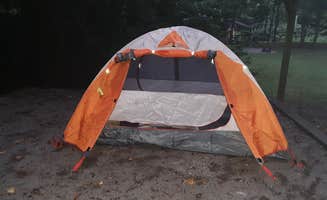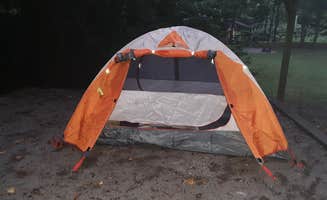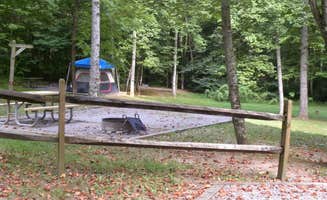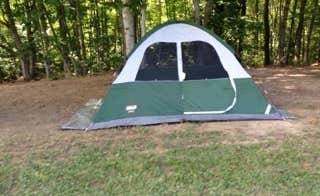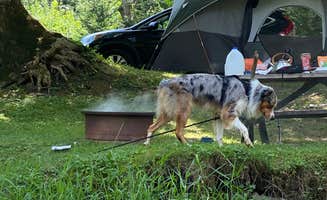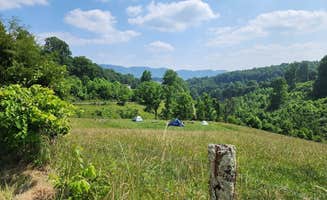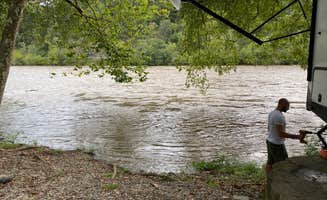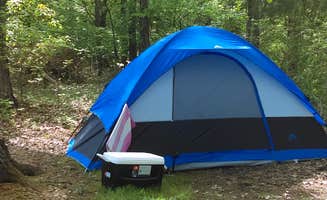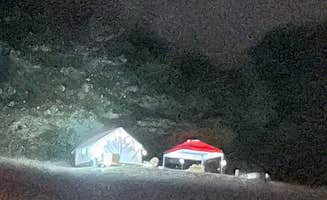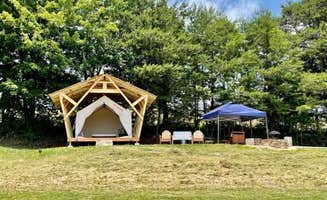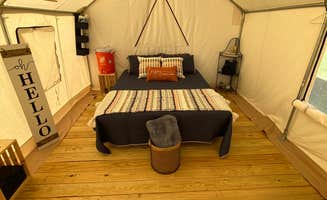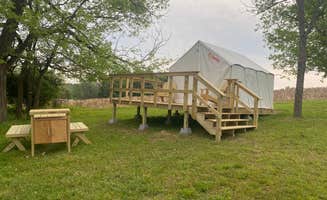Camping spots near Fort Blackmore, Virginia sit amid the Appalachian Mountains at elevations ranging from 1,300 to 3,500 feet. The region experiences distinct seasons with summer temperatures averaging 75-85°F and winter temperatures often dropping below freezing. Most campgrounds remain accessible year-round, though primitive camping areas require additional preparation during colder months.
What to do
Chairlift rides at Natural Tunnel: Take the chairlift down to view the massive natural tunnel formation at Natural Tunnel State Park. "We canoed Clinch River, caved in the park, and took a short guided hike through Stock Creek to backside of tunnel. Highly recommend!" shares Rob J.
Hiking the Stockton Creek trail: Explore this moderate trail that passes through shallow water sections. "This is an old style campground where you put $20 in an envelope. Continuing on there is a short walk to a lovely overlook," notes Christine M. about trails at Flag Rock Recreation Area.
Visit local museums: Communities near camping areas offer cultural experiences. "We visited the local museums and walked the green belt. The green belt is next to the camp ground within walking distance," explains Travis R. The Powell River walking trail provides easy access to Big Stone Gap from several campgrounds.
What campers like
Well-maintained bathhouse facilities: Campers consistently mention clean facilities across the region. "The bath house is extremely clean. The showers are separate from the restrooms," notes Katrin M. about Lover's Leap Campground.
Spacious campsites: Many campgrounds offer good site separation. "All these sites are roomy, but often back or butt to the next site. New super clean showerhouse with plenty of pressure and hot water," reports Gary P. about camping at Natural Tunnel State Park.
Unique accommodation options: Beyond traditional tent and RV camping, several parks offer alternative lodging. "This was the first time I have stayed in a yurt, and it was definitely a learning experience. First of all, it is a cross between a tent and a cabin, and it has no electricity, bathroom, or running water," explains Myron C. at Natural Tunnel State Park Yurts.
What you should know
Limited cell service: Connectivity varies widely throughout the region. "We had great cell and hot spot service (ATT & Verizon)," reports Gary P. about Natural Tunnel State Park, but this isn't consistent across all camping areas.
Wildlife precautions required: The region has active wildlife. "Take bear and coyote warnings SERIOUSLY my friends. I've seen plenty out there but never had a problem taking proper precautions," advises Amethyst B. at Cove View Campground.
Weather considerations: Summer can bring high temperatures to certain accommodations. "The temperatures were in the lower 90s outside, and once we walked inside the yurt, it was like walking into an oven. The temperature had to be somewhere around 110 degrees inside," warns Myron C.
Limited water access: Some campgrounds have restricted water availability. "There is electric hookups but not water. There is a dump station too," notes Jason W. about Flag Rock Recreation Area.
Tips for camping with families
Playground access: Several parks feature specialized play areas. "Great campground. So much fun stuff for the kids to do. Great trails for hiking or biking," shares Monica S. about Natural Tunnel State Park.
Educational opportunities: Rangers often provide learning activities. "They have a full docket of activities, ranger-led hikes, games, crafts and wildlife lectures offered throughout the day," mentions Sara M. at Warriors' Path State Park.
Primitive camping preparation: For families considering more remote sites, plan accordingly. "5 spots with tent pads, picnic tables, fire pit, hanging poles, and bear box. Then there is a very large, communal fire pit, and an open but covered shelter with picnic tables and an outlet to charge your tech things," explains Sarah C. about the primitive camping area at Natural Tunnel.
Water activities: Lakes and rivers provide recreation options. "We drove 2 hours to canoe the Clinch River which was great fun and we got to see a lot of the area," shares Kim A.
Tips from RVers
Site selection considerations: RV campers should research specific site dimensions. "Pay attention to the site size as some RVs had issues getting their larger RVs in their sites with the road/site layout," advises Jennifer H. about Warriors' Path State Park.
Arrival timing: Navigating to some campgrounds can be challenging with large rigs. "HIGHLY recommend getting in before last light. Especially if you're towing anything, roads are steep and winding getting to and from camp/cabins," notes Amethyst B.
Leveling requirements: Prepare for uneven terrain at some campgrounds. "Really nice facility near town. There are a lot of uneven campsites, so bring your leveling blocks," suggests Michelle I. about Warriors' Path State Park.
Hookup variations: Available utilities differ between campgrounds and camping loops. "The newly updated section, Moody Bluff, has FHU and a number of pull-through sites. It only has trees around the edge of one side giving it an open field feeling," explains Sara M.


